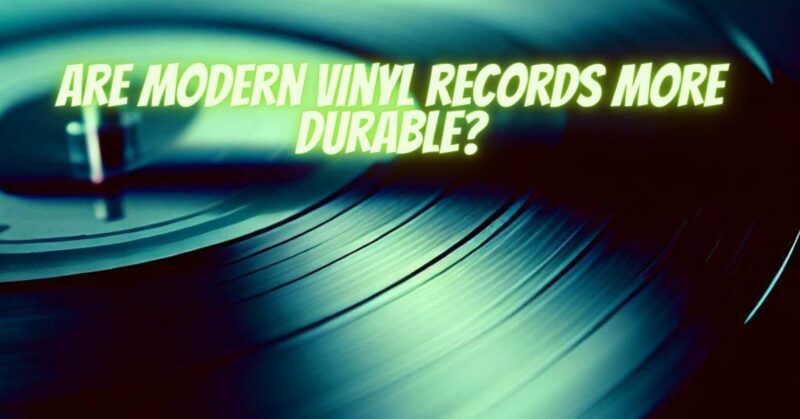The resurgence of vinyl records has ushered in a new era for analog music enthusiasts, sparking interest in the durability and quality of modern vinyl releases. As technology and manufacturing processes evolve, the question arises: “Are modern vinyl records more durable?” In this informative article, we explore the advancements in vinyl manufacturing, the factors affecting vinyl durability, and whether modern vinyl records offer improved longevity compared to their vintage counterparts.
The Evolution of Vinyl Manufacturing:
Vinyl records have a rich history dating back to the early 20th century, and their manufacturing techniques have evolved significantly over time. Early vinyl records were made using shellac or other materials before vinyl (polyvinyl chloride or PVC) became the standard material in the mid-20th century. Modern vinyl records continue to use PVC as the primary material.
Advancements in Vinyl Quality:
Modern vinyl records benefit from advancements in manufacturing technology and quality control, leading to improvements in their overall durability. Key factors contributing to the improved quality of modern vinyl records include:
- Higher Quality Vinyl Formulations: The PVC formulations used in modern vinyl records are often of higher quality, resulting in vinyl that is less prone to warping and surface damage.
- Improved Pressing Techniques: Modern pressing machines and techniques allow for greater precision and consistency in vinyl manufacturing, reducing the risk of defects and imperfections.
- Quality Control Measures: Record manufacturers implement stringent quality control measures to identify and address any issues during the pressing process, ensuring a higher standard of quality.
Factors Affecting Vinyl Durability:
Several factors can affect the durability of vinyl records, regardless of whether they are vintage or modern:
- Storage and Handling: Proper storage and handling play a significant role in vinyl record longevity. Records should be stored upright in cool, dry environments, away from direct sunlight and extreme temperatures.
- Stylus Quality: The quality and condition of the turntable stylus (needle) directly impact the wear and tear on the vinyl grooves. A well-maintained stylus ensures accurate tracking and reduces the risk of damage to the vinyl.
- Playback Conditions: Excessive or improper playback, such as using a worn-out stylus or applying excessive tracking force, can accelerate vinyl wear and affect sound quality.
Preserving Your Vinyl Collection:
To ensure the longevity of your vinyl collection, follow these best practices:
- Clean Your Vinyl Records: Regularly clean your vinyl records using appropriate cleaning solutions and methods to remove dust and debris that may cause surface damage.
- Handle Records with Care: Handle vinyl records by their edges to avoid fingerprints and surface contamination. Avoid dropping or mishandling records to prevent scratches and warping.
- Invest in Quality Equipment: Use a high-quality turntable, cartridge, and stylus to minimize wear on your vinyl records and ensure accurate playback.
In conclusion, modern vinyl records benefit from advancements in manufacturing technology and quality control, making them more durable compared to some vintage records. However, the durability of vinyl records also depends on factors such as storage, handling, and playback conditions. By following best practices in vinyl care and investing in quality equipment, you can ensure the longevity and enjoyment of your vinyl collection for years to come. Whether you prefer vintage or modern vinyl releases, the enchanting world of analog music continues to captivate music enthusiasts, offering a timeless and immersive listening experience. Happy spinning!


